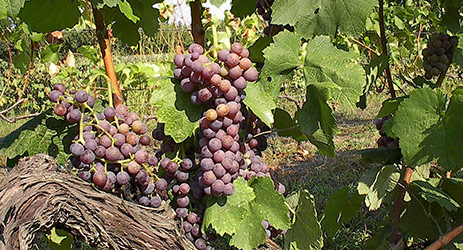[Grape Variety]
Although there are several differently coloured clones of this aromatic, late-ripening Greek variety, most vines produce pink- or grey-skinned grapes which are used to produce white wines.

Its likely origin and most common home is in the centre of the Peloponnese, where the Mantinía appellation requires 85% Moschofilero.
It has high acidity and sometimes struggles to ripen, rarely reaching more than about 11% alcohol, especially at elevations of 600m or higher on the Mantinía plateau. On warmer sites, the variety can yield richer wines but, whatever the style, these white wines are characterised by grapey and floral aromas, ranging from delicate and stony to intensely fragrant with fruit flavours such as citrus and even apricot. The best examples are not only highly aromatic but also deliciously refreshing and quaffable. The use of oak is rare but some producers, such as Tselepos and Spiropoulos, make both oaked and unoaked versions.
There were just over 900ha planted in Greece in 2010. Try wines from Antonopoulos, Boutari, Monemvasia Winery, Skouras, Spiropoulos (the Astála bottling shows the influence of barrel fermentation and lees work) and Tselepos (Blanc de Gris is their oak- and lees-influenced version).
Wine Grapes by Jancis Robinson MW, Julia Harding MW and José Vouillamoz; www.winegrapes.org
All rights reserved by Future plc. No part of this publication may be reproduced, distributed or transmitted in any form or by any means without the prior written permission of Decanter.
Only Official Media Partners (see About us) of DecanterChina.com may republish part of the content from the site without prior permission under strict Terms & Conditions. Contact china@decanter.com to learn about how to become an Official Media Partner of DecanterChina.com.

Comments
Submit